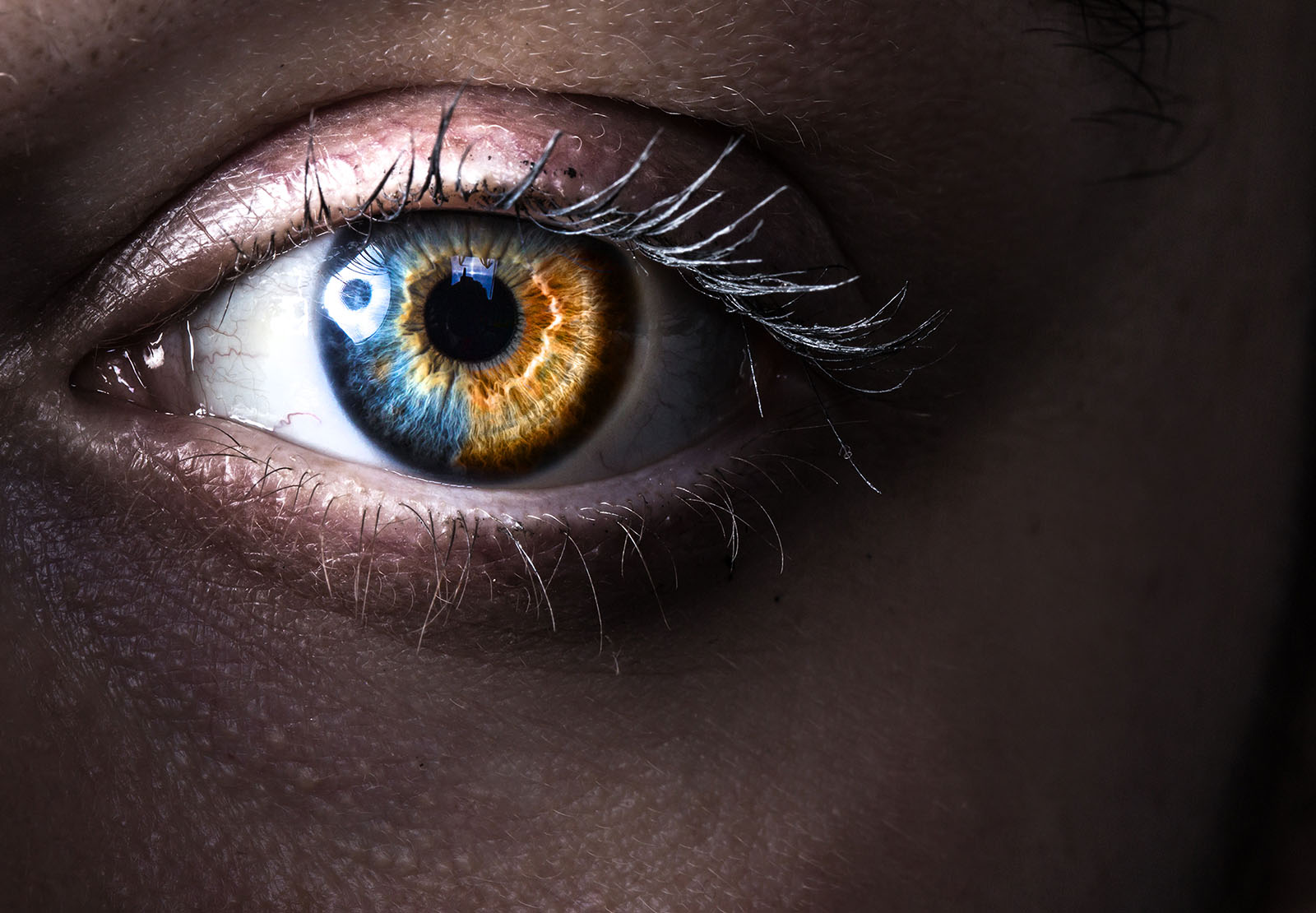Today we talk to you about a phenomenon that affects approximately 1 % of the world's population, iris heterochromia, a phenomenon that affects approximately 1 % of the world's population.. This is a phenomenon and not a pathology, as this condition is only aesthetic in nature and does not usually affect vision. Discover with us what is heterochromia, what causes it and how can it be treated?.
What is heterochromia?
Heterochromia of the iris is an alteration in the pigmentation of the iris that causes the eyes to have a different colour.. This is caused by a type of mutation, which does not present a health hazardwhich causes the eyes to change colour due to a lack of melatonin. The main cause, which we will see later, is genetic, but there are some pathologies that can also cause this condition changes in iris colouring.
This part of the eye, the iris, which determines colour and depends on the amount and distribution of melanin. The more of this pigment is concentrated, the darker the eye. The fewer melanocytes there are, the lighter the eyes will be. The most common colours are the brown, with 75 % of the populationfollowed by hazel (8 %), blue, green and grey. Finally, there are less than 1 % of the population experiencing heterochromia, as well as rare cases of violet eyes.
Complete heterochromia
Among the types of heterochromia, complete heterochromia is the one that occurs when one of the irises is a different colour to the other. This phenomenon is more common in animals than in humans, and occurs frequently in dogs and cats. Complete heterochromia is also called total heterochromia or total heterochromia. iridium.
Partial heterochromia
Partial heterochromia occurs when only a small part of the iris is a different colour from the rest of the iris. Another name for it is heterochromia. iridis.
Central heterochromia
A third option is a variant of partial heterochromia, which is the central one. It occurs when the colour in the centre of the iris is different from the colour of the peripheral part of the iris.. This forms a central ring around the pupil. The true colour of the iris is the outer iris, and only the central part is affected by heterochromia.
Heterochromia according to time of onset
A second criterion for classifying heterochromia is its time of onset. If it has already from birth one of the eyes is a different colour, or the phenomenon is generated after only a few days of life, it is referred to as a congenital heterochromia.
The acquired is when colour change occurs at older ages. In this case it is still not a visual problem, it is only a visual alteration, although it is advisable to analyse the cause that has provoked it.
What are the causes?
What lies behind this phenomenon and its causes are diverse, and it is important to differentiate between congenital and acquired heterochromia. Congenital is caused by conditions of genetic origin. such as piebaldism, tuberous sclerosis, Parry-Romberg syndrome, neurofibromatosis, Waardenburg and Horner syndromes.
The acquiredwhen both eyes have the same colour, but one of them changes at a certain moment. It is explained by health problems such as diabetes, glaucoma and the use of medication for their treatment.some eye injurybleeding into the eye, melanomassiderosis or uveitis.
Can heterochromia be treated?
Heterochromia is a different shade in the irises, either in both eyes or in the same eye. If you develop this condition, it is advisable to go to a complete visual reviewIt is this study that will determine if there is an underlying problem. Dr. Salvador Nebro Cobos is a reference in Fuengirola and the Costa del Sol as a specialist in Advanced Ophthalmology, so if you have any doubts, he can study your case individually.
When it is a phenomenon of genetic origin, the difference in eye colour does not progress and the ocular function remains correctThe phenomenon is then just an anecdote. On the other hand, if the process is procuredWhen changes in colouring that were not present before are noticed, it is advisable to visit a specialist ophthalmologist, in order to to investigate thoroughly whether there is an underlying disease or abnormal ocular function.
The heterochromia is not a serious visual problem, it is simply a phenomenon that affects aesthetics. However, it is always advisable to go to a specialised ophthalmological centre to decide whether or not to treat the problem. which treatment is best suited to the situationafter a thorough eye examination.



